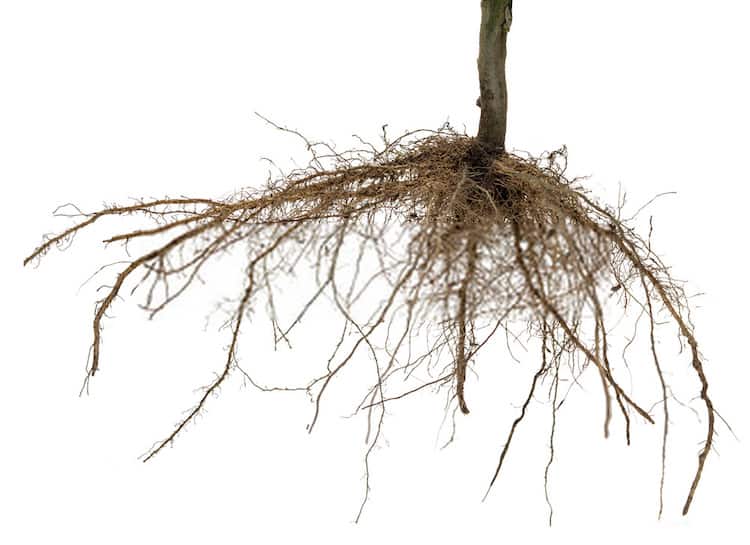Roots are the powerhouse of a plant – nutrients and moisture pass through the root system to sustain the rest of the plant.
Root cuttings, if done correctly, are an economical way to improve the overall plant’s health, increase plant yield or divide root-bound plants in old pots into new ones.
The viability of plants after root cutting is dependent on the root size, plant type, and extent of the damage.
In this article, you will get to learn about different root types as well as know what happens if you cut the roots of a plant.
Table of Contents
What Happens If You Cut The Roots Of a Plant?
Root cuttings are simple pieces of root cut from plants that are meant for propagation. Sometimes, to cultivate plants for indoor use, you end up cutting off some plant roots.
This practice is an acceptable necessity for some house plants. However, not all plant roots react in the same way as others.
Let’s take a look at some plant roots!
Anchoring Roots
Some large plants have long roots growing from their trunk base or stem. These roots serve as anchors that provide support and take up nutrients.
If some of these large roots are cut, using gardening tools, your plant could start to decline slowly; showing stunted growth for some years. And the damaged root part could cause the nearby branches and foliage to grow smaller in size compared to a plant with roots in the right working conditions.
Additionally, a massive cut on an abundant source could lead to a reduced lifespan of a plant’s life cycle, particularly in tall plants. Trees especially are strongly dependent n their large roots for protection, without them, one heavy wind and the tree is on the fall dead.
Regenerating Roots
Regenerating roots react well to cut and come again to the method of cutting roots. Using this method, you can stimulate new root growth in plants that poses regenerated roots.
The crucial element to encourage fast root growth is moisture and soil texture. Be it an outdoor plant or indoor plant, containers, or garden plants, and your garden soil needs well-draining soil, avoid over flooding the soil.
An overwatered soil together with a damaged root is an open invite for fungus, bacteria, and pathogens, to invade the plant, feed off remaining nutrients, and spread diseases. It is best to maintain moist and brittle soil, and this environment makes it easier for the root to regenerate and facilitate growth.
Transplant Considerations
Plants with excellent or small root systems usually have challenges resulting from cut roots. At the early growth stage, some seedlings require extra nurturing in the soil before they are fully established. Roots torn during the transplant process is especially a problem for plants with small or delicate root systems.
Seedlings need extra attention from the soil moisture after transplanting because they have so few roots. By maintaining a moist and saturated environment, the soil can then provide maximum nutrient and moisture to the small root hairs.
A combination of this support mechanism and photosynthesis helps the plant to grow and replace the cutout root. The tiny root hairs can then rely on the soil for maximum nutrient and moisture absorption. This medium, combined with photosynthesis, allows the plant to thrive to replace the torn roots.
Ensure to regulate your seedlings exposure to sunlight, keep them under shades until roots are fully recovered
Feeder Roots
Some plants cultivate restricted feeder roots that grow both ways underneath the soil. Feeders’ roots are small, narrow, and thin in plants. They are responsible for absorbing nutrients and water from the soil.
Their beautiful hair-like structures is a one-celled projection which possesses many extensions, that enhances its ability to retain water. If Para venture the root is partly cut, it won’t kill the plant immediately because they are always regenerated.
Conclusion
For some plants, cutting roots is a periodic necessity to enhance their growth. Now that you know what happens if you cut the roots of a plant, you have to apply extra care when handling the root system of any plant and ensure to give your plants maximum support right after every cutting section.
Ensure to study your type of plant before cutting because pruning brings about injuries, and plants that have underground buds or are unhealthy may not survive the process.
Always maintain pruning tools after use to minimize the risk of spreading infection on the injured plant.






Leave a Reply